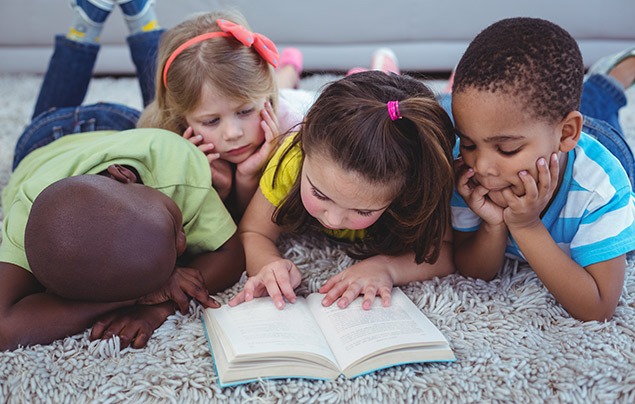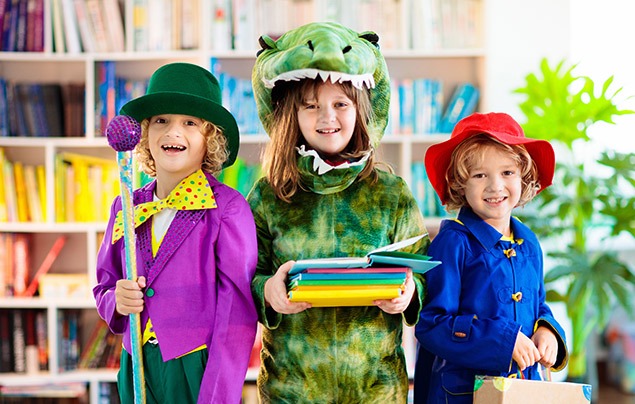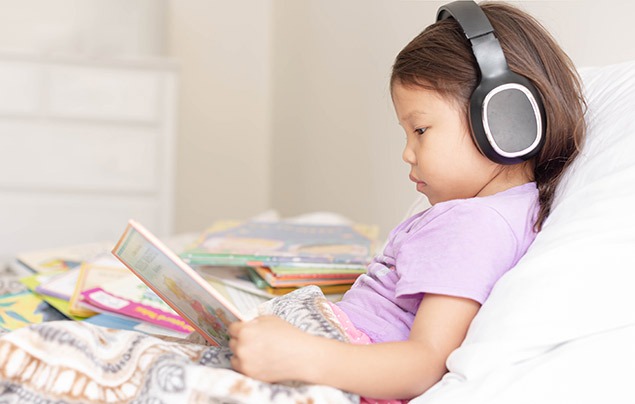Too much screen time? Here’s how to refocus on reading
Kids love stories, and reading comes with all sorts of benefits to their future. Discover some surprising ways to coax them back to books…
Screen time is a big topic in the world of parenting. The avenues of worry are endless – from wondering whether kids are getting too much screen time, to weighing up the pros and cons of certain screen uses and working out how to reduce your child’s screen time.
Then, once you’ve worked out what the right amount of screen time is for your kids, the next step is figuring out how to occupy them the rest of the time. And that’s not easy!
How to bring back books.
Even the most screen-focused kids are still seeking out stories, whether from their favourite films or even their online games. But watching the tales unfold is not the same as the process of reading, which carries real world benefits to kids’ wellbeing.
Research has consistently tied reading activity and proficiency to academic success, increased empathy and a deeper understanding of the world – all things most parents want for their kids.
But if screens have taken over your kids’ lives, parents can still steer them back to books, says Maria Russo, former children’s book editor at the New York Times and co-author of How to Raise a Reader.
“If you want your kids to become readers, you have to help them find books they love,” she says. “That means that your work is not so much nagging them to read or taking away their devices – your work is helping them discover the kinds of books that excite them.”
So, if you find yourself asking: “How do I reduce my child’s screen time?”, you might discover the answer in the kids’ section of your local library, or between the pages of the forgotten books on their shelves.
Here are some top tips to help refocus your kids on reading…
Consider your kid’s personality when helping them find books.
“Some kids are information seekers,” Russo says. “They’re not necessarily reading for the story but to answer their questions.” For these children, she suggests atlases or almanacs, like Guinness World Records.
Tap into their interests.
Match books to kids’ obsessions – whether it’s animals, history or Minecraft – and kids are hooked. “Those are the kids who cannot wait to read,” Russo says. “They crave those books.”
Got an animal lover, history buff or future scientist in your family? Then inspire their passion and reignite their love for reading with a subscription to National Geographic Kids magazine. Perfect for kids aged 7-12, each issue contains fascinating features about science, nature and history, plus educational games, puzzles and more, to keep your kids reading!
And, in the UK only, you can nurture young learners aged 3 – 6 with a subscription to National Geographic Little Kids magazine. Full of cute creatures, activities and puzzles, this subscription is perfect for kickstarting little ones’ love of reading.
Limit devices and make books accessible.
Digital temptations can be hard for even adults to resist, says Christine Elgersma, senior editor of learning resources at Common Sense Media. Making some rules can help.
“Setting up some screen-free times and zones in your house encourages kids to find something else to do,” she says. Examples might be before bedtime or on a weekend afternoon.
Then make reading easy: “Have some books you think might appeal lying around, to tempt kids who are looking for something to do,” she says.
Fill in gaps.
For kids who live in homogenous communities, reading books by authors who can offer a realistic glimpse into a different world – whether racial, regional or socio-economic – can help kids develop empathy and understanding. “This is the world they’re inheriting,” Russo says.
Create readerly habits.
Browse in bookstores or make regular trips to the library to help build a habit of seeking out new books, Russo says. And then when they grow up, they’ll pop into bookstores, too. “They find themselves unconsciously emulating how their parents live,” she adds.
Reading for pleasure in front of your kids helps, too, says Theresa Yang, a school librarian and mother of four. “We did a survey asking kids how many of their parents read for pleasure. They all had an answer,” she says. “Kids are very observant of their parents’ reading habits.”
She says she noticed a correlation between the kids who said their parents read and the students who are strong readers, too.
Explore genres.
Graphic novels, poetry, audiobooks and novels in verse can be easier ways for kids to jump into books if they’re having trouble getting motivated. “You’re not confronted with a wall of text,” says Gene Yang, Theresa’s husband and author of several graphic novels.
Don’t shy away from the tough stuff, either. As kids get older, some parents might worry that the topics in young adult books are too mature. But Russo says if kids are interested, it’s not likely to do them any harm. “Wouldn’t you rather have your kids learn about this stuff through a book instead of the internet?” she asks.
Plus, tough topics can help contextualise what’s happening in their worlds. “You might not think they’re ready to read about drug addiction or police brutality,” Russo says. “But if that’s what their friends are talking about, they want to be in the conversation.”
Encourage fandoms.
Diving deep into fan communities by creating and publishing fan art or dressing up like favourite characters can help keep kids excited about books, says Gene Yang, who’s currently writing a Batman / Superman graphic novel for DC comics.
Writing a fan fiction in online platforms can be a fun way to mix reading and writing, too. “I think that fan fiction and cosplay gives people in general – and kids in particular – a way of participating in what they’re reading,” he says.
Create community and connection.
Reading doesn’t have to be a solitary experience, Elgersma says. “Reading a book together – out loud or book-club-style – can add a social, connective element,” she says. Parents can do that along with kids, and they can help organise sessions with friends, too.
At the Yang’s recent online literacy night, teachers led kids in a book scavenger hunt. They asked them to find different books – a favourite book, a specific genre, a book of a certain colour – and show them on screen. “That activity built a sense of community, even virtually,” Gene says.
If your kid loves non-fiction, then try tackling family-friendly news stories together. You can chat about the importance of avoiding ‘fake news’ and encourage them to have their own opinions. And you might not have to look far to find suitable stories – for positive news delivered straight to your inbox, sign up to the free National Geographic Kids newsletter.
Read family stories.
Gene Yang recently showed his kids an essay a young cousin had written for school about Yang’s grandparents. “They were so enthralled,” he says, adding that they especially loved reading about their family history through the perspective of another family member.
Yang suggests that parents ask grandparents or siblings for writing stashed in attics or garages. “Every family has a body of literature,” he says. Here are some more ways you can get kids excited about family history.
Give in to digital – a little.
Research is mixed on the benefits of paper versus e-books, but Elgersma says if e-books (or even audio books) are what get your kids excited to read, then fine. Just steer away from reading apps with lots of interactive features, which may reduce retention of information, she says.
Don’t worry.
For those parents whose children were once readers but now spend their free time plugged into an X-box, don’t fret, Russo says. As they get closer to adolescence, kids might just be taking a break and trying to identify their own identities.
“The fact is that books and the written word are a really great way to tell stories and deliver information,” she says. “And when people are looking for that, they’ll gravitate back to books.”
So, if reading just isn’t happening right now, don’t be too hard on them (or yourself). But don’t give up – books are brilliant, and you’ve lots of tools to help your kids see that, too!

















LEAVE A COMMENT
THANK YOU
Your comment will be checked and approved shortly.
WELL DONE,
YOUR COMMENT
HAS BEEN ADDED!
COMMENTS
CUSTOMIZE YOUR AVATAR